
Seeing John Knuth’s exhibition, The Hot Garden, at Hollis Taggart’s new downtown outpost was wonderful, surreal, energetic, and unexpected. This is Knuth’s first major body of work following the devastating Eaton Fire in January 2025, which destroyed the artist’s home and archive. This exhibition gives us an opportunity to see fragments of the past and the birth or rebirth of something entirely new out of the ashes, embodying the quote in the press release from Octavia Butler’s Parable of the Sower, writer and once Altadena resident, “All that you touch, you change. All that you change, changes you.”
Reading this quote while experiencing the works in person really set in motion the direction and intention of the exhibition. This show is one of renewal. This exhibition also introduced new methods for creating the works and reusing artifacts recovered from Knuth’s home in Los Angeles. At the center of The Hot Garden are Knuth’s “fly paintings,” ethereal and atmospheric abstractions produced through an unconventional method, one which he feeds over a million homegrown household flies, a mixture of acrylic paint and sugar water. Over the course of several weeks, the flies regurgitate the mixture onto the canvases, producing shimmering and pointillist surfaces that challenge the boundaries of nature, beauty, and process, while viewers get to see the effects first-hand when all three of those aspects come together. In the gallery, the flies were working in an enclosed area on the lower floor, from above, while viewing the other paintings, you could only hear a slow, soothing buzz, unaware of the scope and scale of what was below us, seeing the source of the buzzing, and revealing more works below, was a great discovery.
Knuth mentioned many influences in his works, one of the largest being Monet. Inspired by Monet’s gardens and sunrise works, the radiation of both color and light, layered together, builds up a dense atmosphere and a new environment in which we can venture. The deep maroons of Rothko also seep into the margins and build up many of the foundation layers of these paintings. These works, while created from organic chaos, have always resembled the great expanse of urban landscapes such as New York City and Los Angeles, especially by the piece titled New Track. The shadows of buildings lurk just on the surface, far enough away from us, hidden by smoke, ash, and a haze of color, that we cannot discern any signifying details of the place. We just have to enter space and explore the new landscapes ourselves.
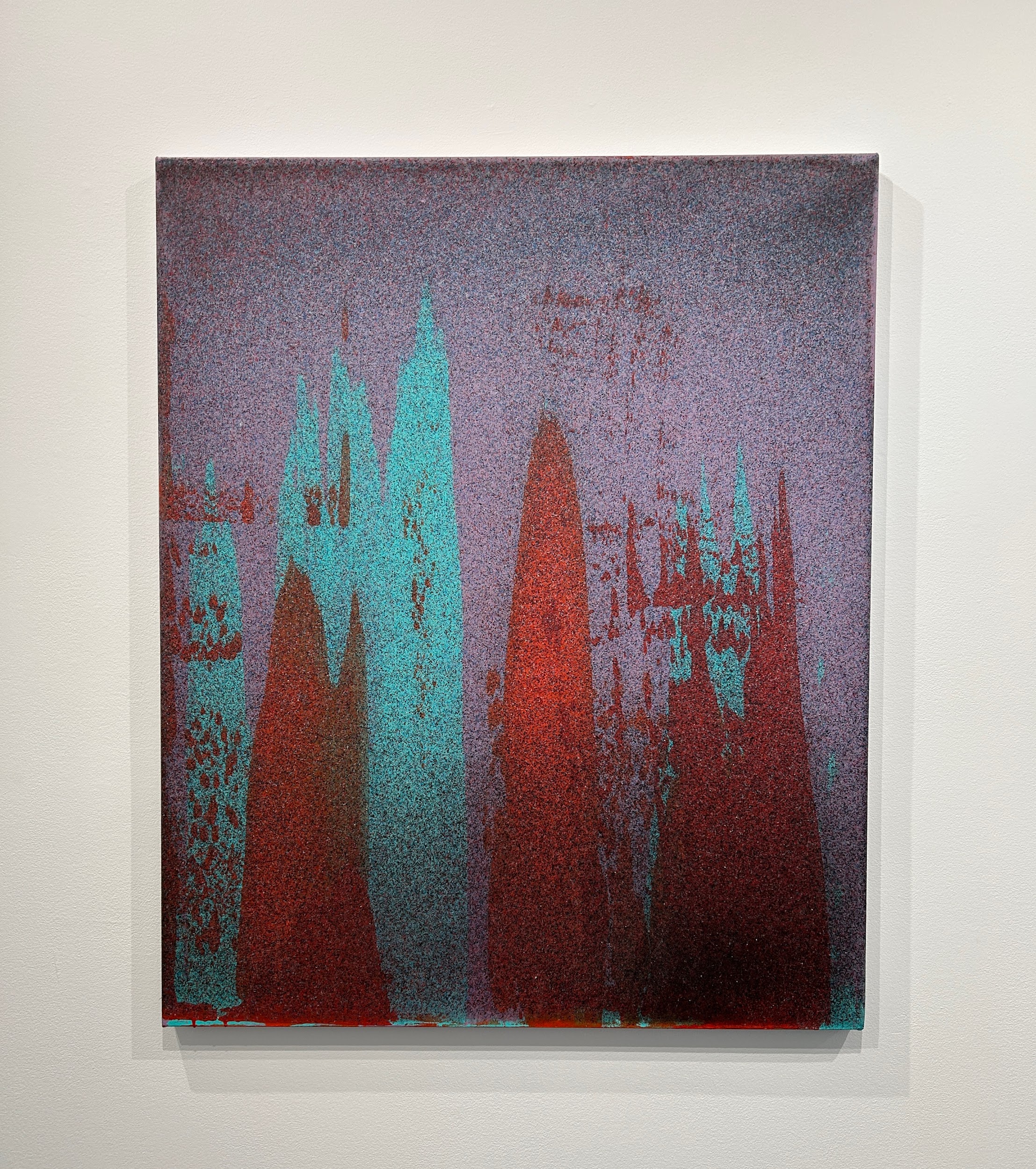
In using flies for so long, Knuth has come to learn their rhythms and life cycles. He also knows what processes they can handle and how many generations he needs for each piece. What is really interesting with this process is the idea that both the painting and the flies are reacted to, and Knuth works within that flow. His unconventional process of painting involves a great deal with nature and abstraction, building up layers to create new, dense spaces, where each generation of flies offers a new illuminating color to the mix, such as the glowing blues and radiating oranges in Bungalow Heaven.
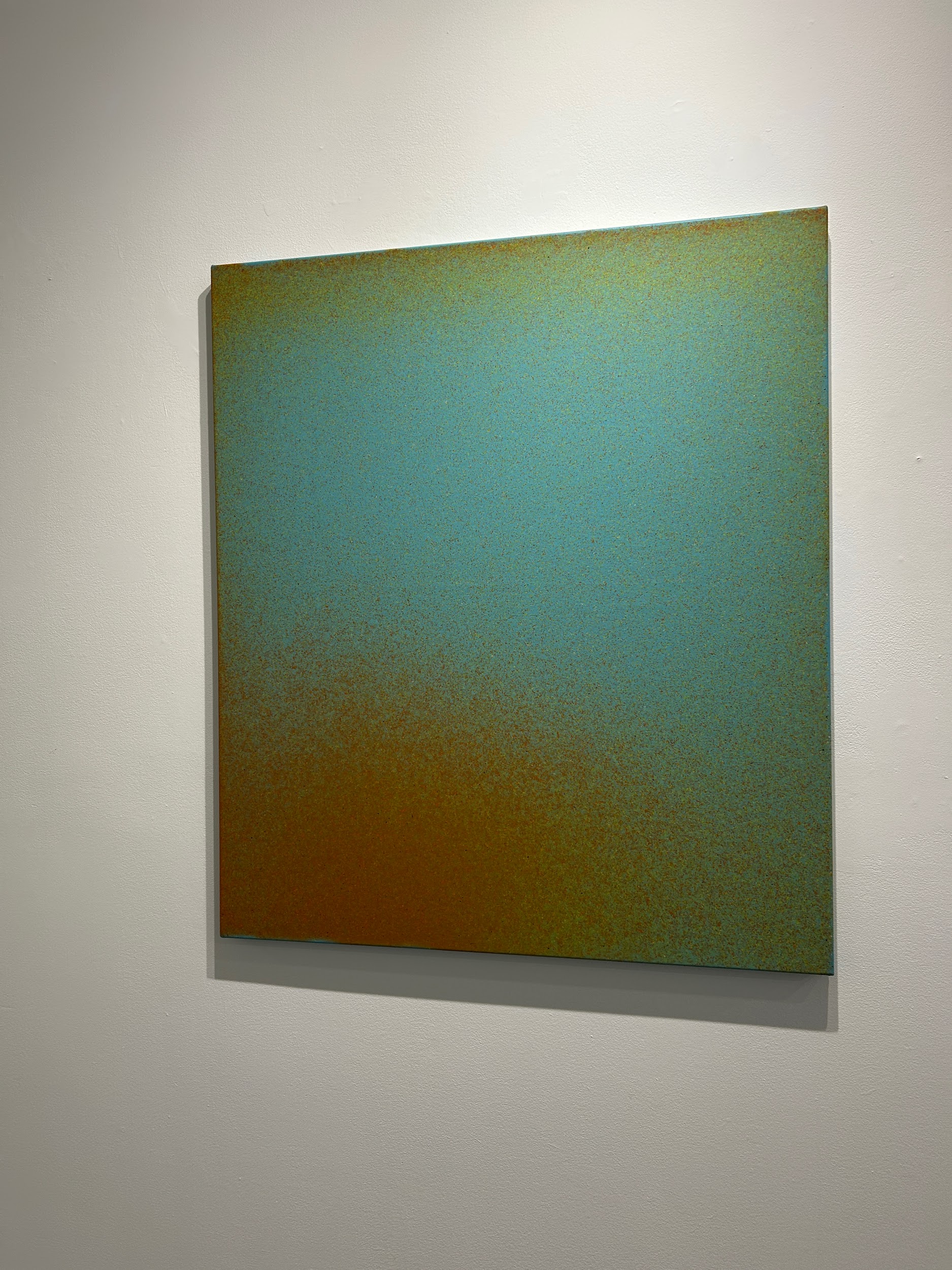
The paintings bounce off of light and darkness immensely well, using color keys and contrasting vibrations, the landscapes become full of energy. They remind me of post-fire scenes, where the blaze has simmered down, only the crimson red skies remain, and the falling ashes litter our gaze. The red sky becomes a warning of what is to come or what simply was just moments before; this tension and apprehension linger. These pieces become a suspension in both time and experience. Except with the piece, Red Sky in the Morning, where the sun continues to rise, bringing with it a new day, and the blue skies begin to sear through the reds.
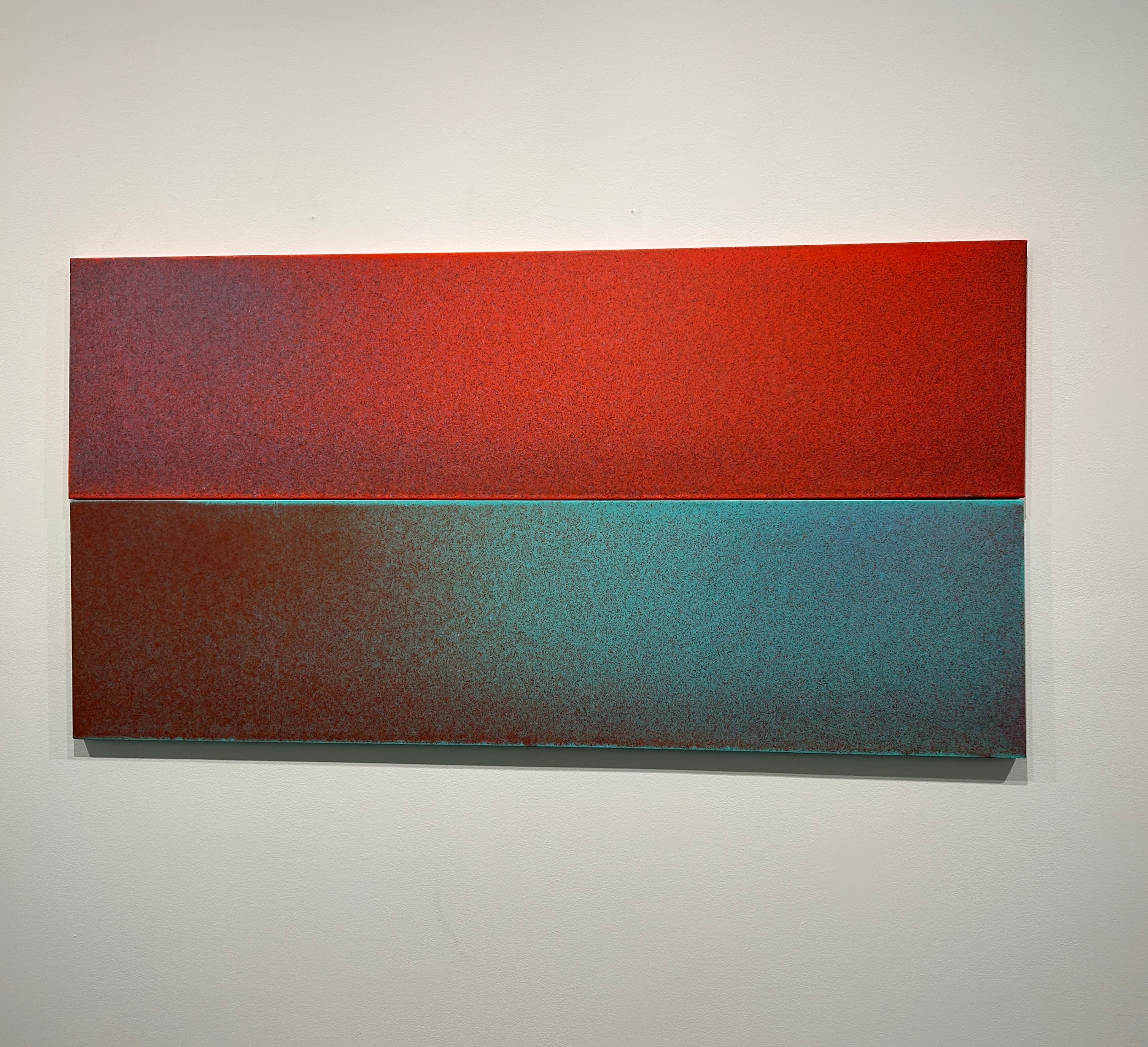
The rising sun idea seems fitting with Knuth’s sculpture installation on the floor below, which includes fragments of artworks recovered from Knuth’s home. Many pieces carry with them Knuth’s inspirations, as well as the works of other artists who are his friends, and pieces of art history. These pieces become fragments of the artists’ journey and the artist’s home. Inspired by LACMA and the Getty sculpture collections, Knuth has his flies paint these sculptures for the beginning of the show. This was a poignant gesture to me because it brings together Knuth’s painting practice and his creation of something new with this Sculpture Garden of his own. The flies seem to gravitate to specific spots and pieces, covering artifacts of the past, and chaotically pulling them into a new existence.
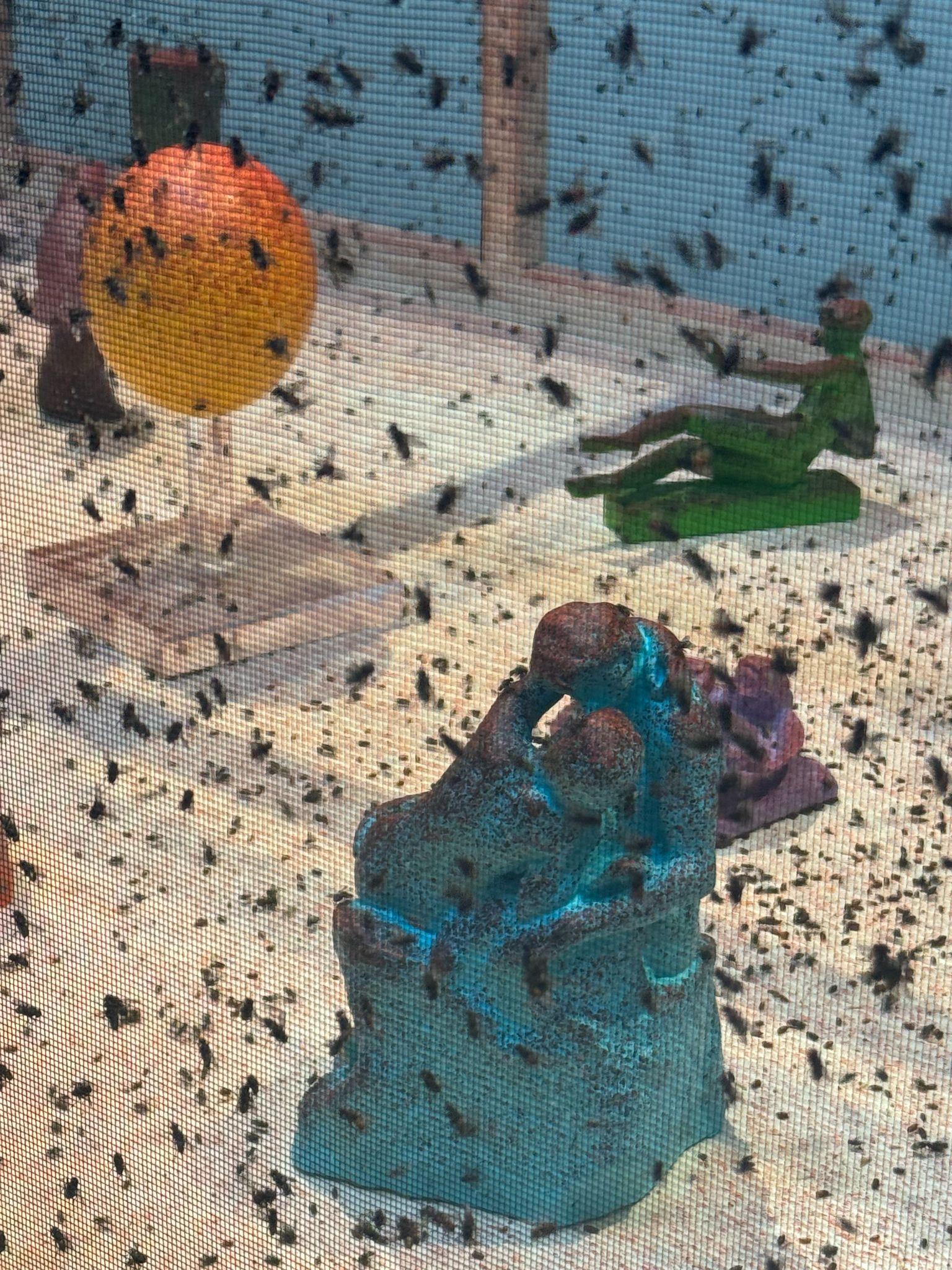
Knuth also has other pieces that create further connections within the show. He has a piece that he collaborated on with his son, alongside displaying an article about the LA fires that destroyed his home, and Monet postcards of some of Knuth’s favorite works. All of the pieces are covered in the fly paint remnants. In using these pieces, the news articles become the past, and creation becomes the future. Knuth goes back to a process he knows so well and uses it to create intriguing new spaces for us to explore and contemplate, and soon, those spaces could be covered in new city buildings once again. The Hot Garden exhibition is both a reckoning and a renewal: a reckoning with catastrophe, with what is gone, and a use of pieces to rebuild and create anew. This exhibition is inspiring to see, and hearing the stories behind the works transforms catastrophic loss into vivid artistic insight on change and resilience.
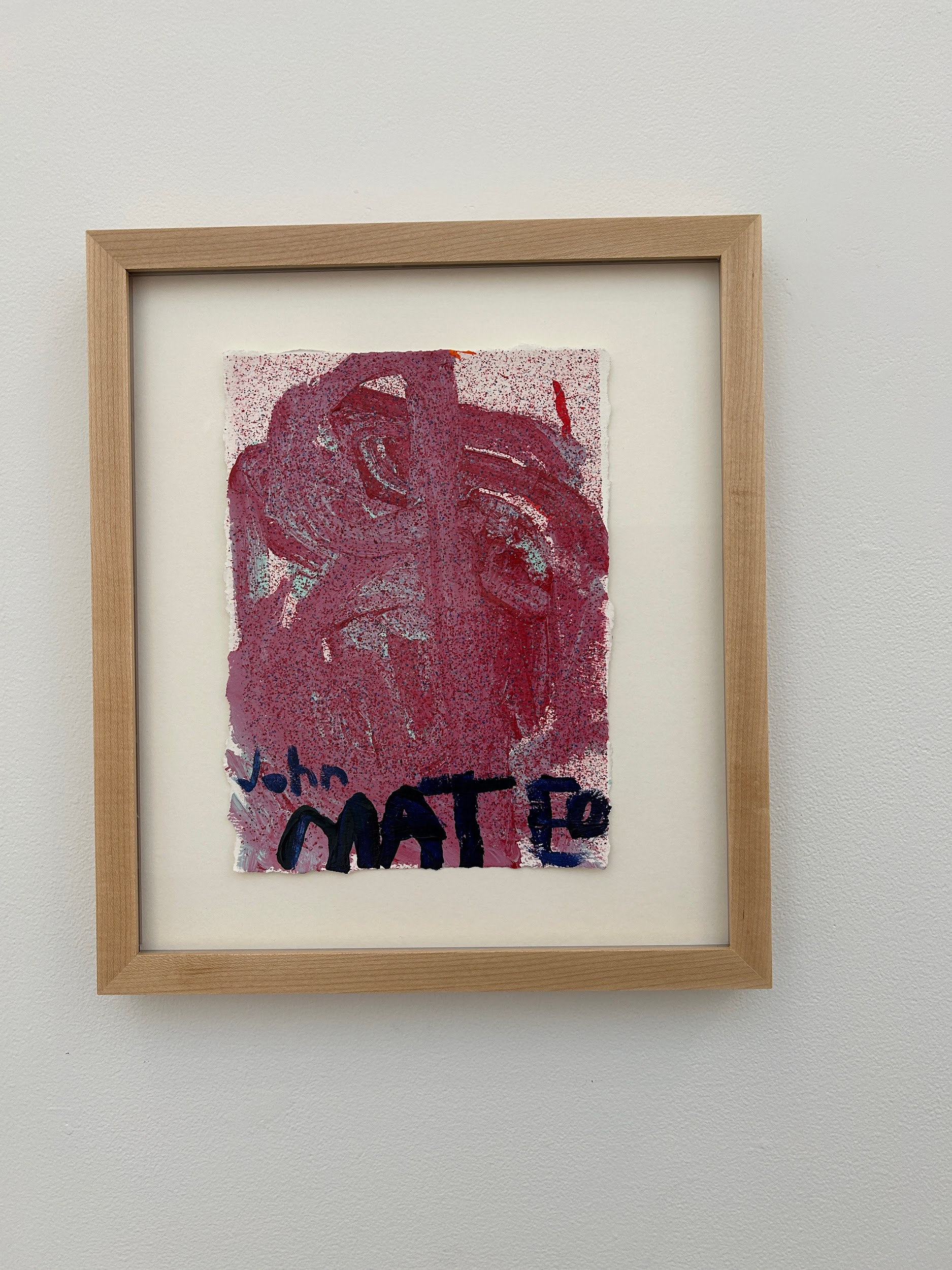
The Hot Garden, June 26th- August 16th, Hollis Taggart Gallery (Downtown), 109 Norfolk Street, Ground Floor, New York, NY, 10002,
Through August 16th, 2025
@hollistaggartdowntown
Make your tax-deductible donation today and help Art Spiel continue to thrive. DONATE
About the Writer: Taylor Bielecki lives in Gowanus, where her studio is, and works at Pratt Institute, where she earned her MFA, she also studied at Penn State, where she earned a BA in English and a BFA in Fine Arts. She finished as a finalist in the Kennedy Center’s VSA National Emerging Young Artist program for 2017; where she earned an award of Excellence. She has shown prints internationally in a print exchange in Australia and exhibitions in Dubai, India and the Glasgow School of Art. She has also shown paintings internationally in Gallery 24N, PhilaMOCA’s juried exhibitions in Philadelphia, Pa., Perry Lawson Fine Art in Nyack, NY, BWAC in Red Hook, and Greenpoint Gallery in Brooklyn. Taylor has joined Art Spiel as a contributing writer.